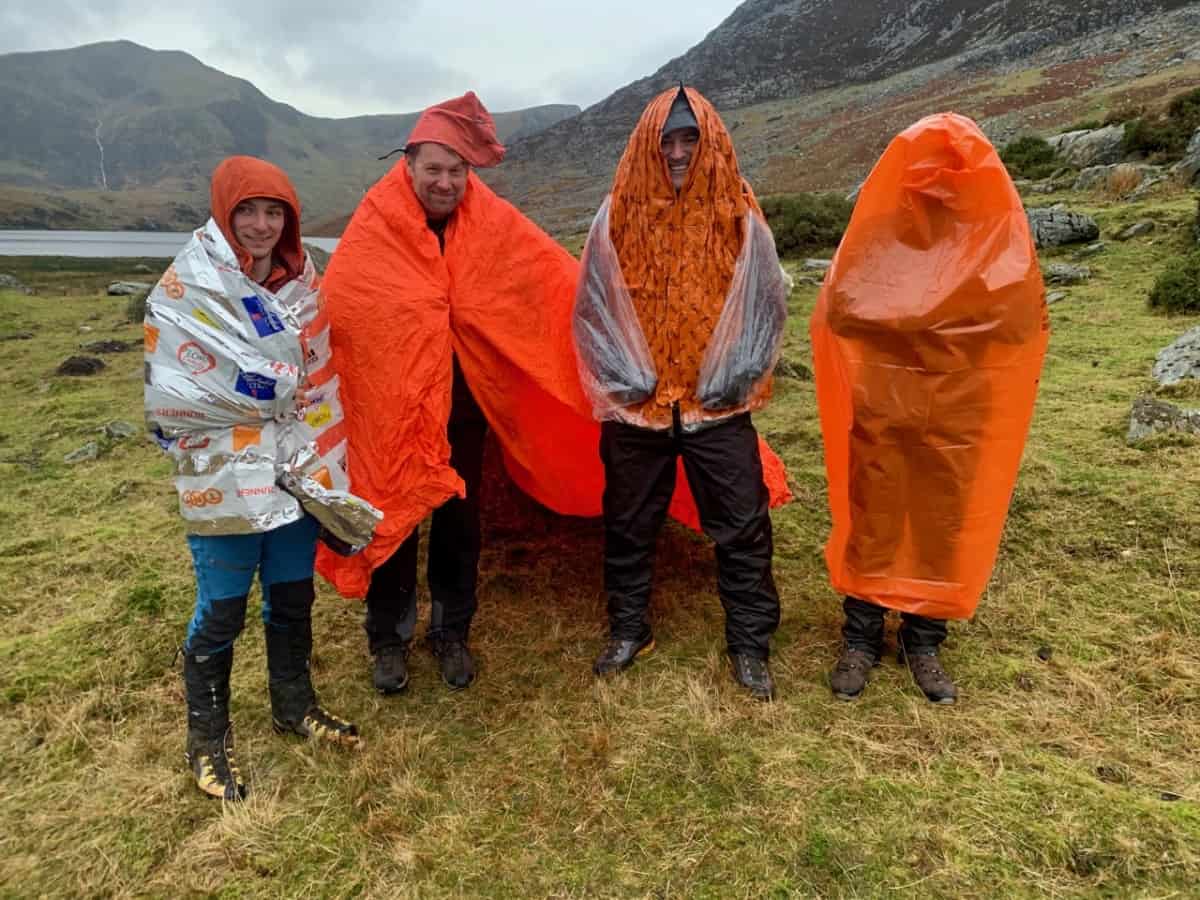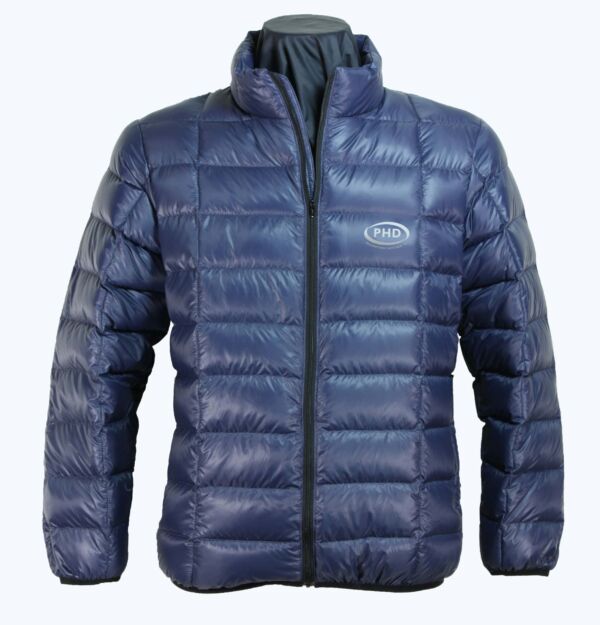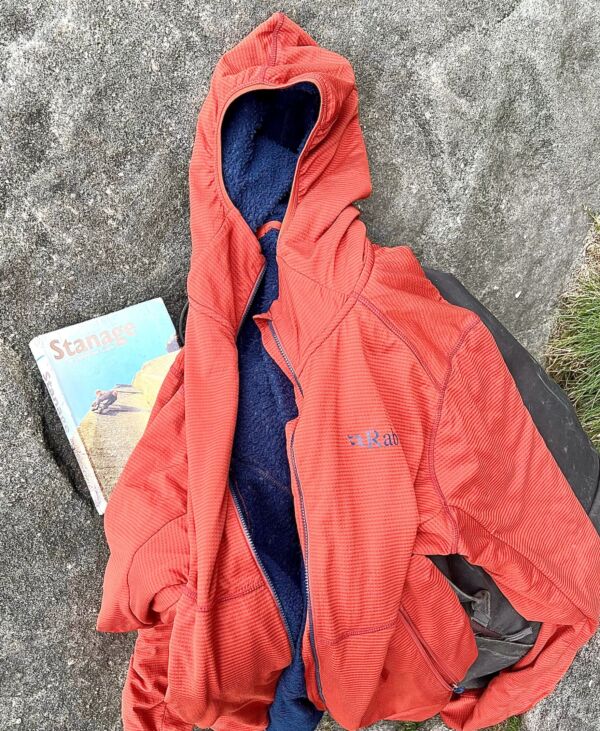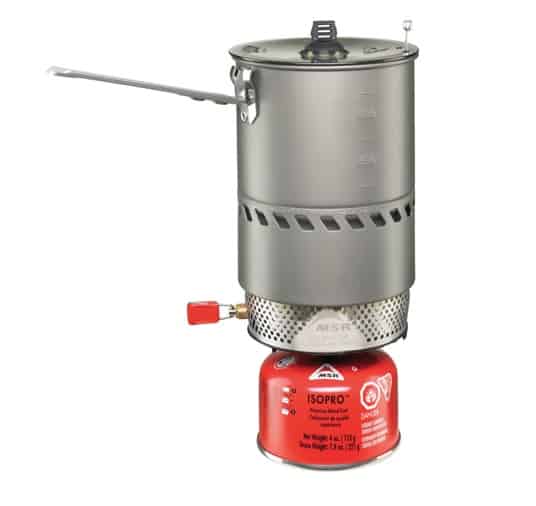Emergency Shelter review
The media loves a headline and “The bivy bag probably saved their lives” was a great one provided by Willie Anderson, leader of Cairngorm MRT, following a successful search for a couple who became benighted in the Cairngorms last year.
Many people are however unaware of how to use a bivy bag correctly or are confused by the now bewildering array of emergency shelters, bags and blankets on the market. This is not a review of everything on the market indeed it is only selected highlights, with the idea of informing those who are bewildered and allowing you to select the best emergency shelter for you and what you do.
Just like cars (or skis, ice axes etc) different models of emergency shelter have different price points and different capabilities. If you are going to be stuck in the cold on a hillside its best to have a tent, insulating mat and a sleeping bag, but these certainly aren’t going to be carried all the time, just in case. What you take is a compromise based on the environment, group, activity, weight, cost etc.
A sample range of some of the best emergency shelters is arranged in cost order below:
Personal Emergency Shelters
Blankets
 Foil blankets are super lightweight and great for the finish line of marathons, but their utility on the mountains in an emergency situation is very limited. They do reflect some heat back towards the body so are better than just a plastic sheet, but don’t provide much shelter from the wind. In anything but a light breeze they have a tendency to turn into a sail and it’s almost impossible to get a seal around the body to keep the heat in. They also generally only cover half your body (unless you are very small). Having been called to rescue fell runners trying to derive shelter from a little square of foil, all I can say is its better than nothing, but pretty pitiful.
Foil blankets are super lightweight and great for the finish line of marathons, but their utility on the mountains in an emergency situation is very limited. They do reflect some heat back towards the body so are better than just a plastic sheet, but don’t provide much shelter from the wind. In anything but a light breeze they have a tendency to turn into a sail and it’s almost impossible to get a seal around the body to keep the heat in. They also generally only cover half your body (unless you are very small). Having been called to rescue fell runners trying to derive shelter from a little square of foil, all I can say is its better than nothing, but pretty pitiful.
Some blankets have extra insulation added to try and trap a warm layer of air, but this is of pretty minimal use on the hill as the inability to create any seal means the wind will whisk this warm air away.
In the past some manufacturers have claimed you get a radar return of a foil blanket which enhances your chance of detection – maybe in the polar wilderness, but with so much ground clutter (rocks, walls etc) on UK mountainside and the staggering unlikelihood that radar will be deployed in a search make it a red herring in my opinion.
In short don’t waste your money on one, but if you have one in the bottom of a drawer its better than nothing.
Blizzard Jacket
 This gets a category of its own and not just because it’s a great emergency shelter. It’s a cross between a bag and a blanket in that it doesn’t cover the full body, unlike a bag. It pulls over the head and has an elasticated waist draw cord allowing a good seal to prevent the wind taking all the warm air away, unlike a blanket. Really quite like a jacket! and allowing you to walk and perform tasks with it on.
This gets a category of its own and not just because it’s a great emergency shelter. It’s a cross between a bag and a blanket in that it doesn’t cover the full body, unlike a bag. It pulls over the head and has an elasticated waist draw cord allowing a good seal to prevent the wind taking all the warm air away, unlike a blanket. Really quite like a jacket! and allowing you to walk and perform tasks with it on.
The Reflexcell material on the core and shaped hood traps a layer of warm air in its cells and its reflective inner surface radiates heat back towards you. Blizzard sales data suggests that it is three times as warm as a polythene sheet.
On our Lowland Leader, Hill and Moorland Leader, Mountain Leader and First Aid courses everyone gets to play with a whole variety of emergency blankets / bags/ shelters and this is always the hands down favourite as the extra warmth is instantaneous, its packed size is minimal and it is very lightweight.
Blizzard also do a 3 layer foil jacket which is warmer but heavier and bulkier.
Survival bags
 You can choose between cheap plastic, more expensive insulating ones or much more expensive and durable breathable fabric offerings.
You can choose between cheap plastic, more expensive insulating ones or much more expensive and durable breathable fabric offerings.
Plastic survival bags are great at keeping the wind and rain out (jump to the bottom to read how to use one properly). The heavier weight (more robust) ones can be used as a rucksack liner, turned into a poncho and are also great for sledging or as an emergency pulk. However, they don’t have any thermal properties unlike the Blizzard jacket / bag or Escape bivy and anyone who has had to spend a night in one in an emergency knows they get pretty damp inside from condensation. Although, at around £5 it’s almost inexcusable not to have this great emergency shelter.
When you do buy one, get an orange one. Clear plastic covering a dark jacket doesn’t show up very well when the rescue team is looking for you.
The Blizzard survival bag at only 95g heavier uses the same Reflexcell material as the jacket but in three layers and offers a much warmer experience than a plastic bag if you are happy to splash the cash. You can reuse them, but they don’t go back to the same neat size (about the size of a video cassette for those that remember them) but Blizzard do offer a vacuum repacking service.
The SOL Escape bivy is lighter than the 3 layer Blizzard bag, but not as warm. (Blizzard also do a lighter two layer foil version) Without scientific tests, warmth is really hard to gauge, but it feels less warm than the Blizzard bag but would definitely be warmer and more breathable than a plastic bag.
Gore-Tex or similar breathable and waterproof bivy bags (e.g. RAB Alpine Bivi) can be used as emergency personal shelters but it’s not really what they were designed for hence they are more expensive, robust and heavier. Because they are breathable, they offer a drier night if you have to spend a while in one, but their cost and weight places them relatively low down on their desirability as a standard emergency shelter in the UK hills.
Group Emergency Shelters
 In my opinion, this is what UK hillwalkers and mountaineers should be carrying. A lightweight 4 person shelter weighs only a fraction more than a polythene survival bag and used on their own as a personal shelter they are similar to a polythene survival bag. They keep the rain and wind off and the material has no insulation properties.
In my opinion, this is what UK hillwalkers and mountaineers should be carrying. A lightweight 4 person shelter weighs only a fraction more than a polythene survival bag and used on their own as a personal shelter they are similar to a polythene survival bag. They keep the rain and wind off and the material has no insulation properties.
But, and it’s a huge but – if required you can get several folk into a group shelter where they benefit physically from each other’s warmth and benefit hugely psychologically as they are all together. Also, if someone is injured a 4 person shelter can be erected over the casualty with enough space to work on them (something virtually impossible with a 2 man shelter) and keep the casualty and their carer out of the elements. Obviously the bigger the shelter the more comfortable you can be and with a few ski poles to hold up the roof or handy boulders / walls a pseudo tent can be constructed.
A key point though is it’s not a group shelter unless you can get all of the group into it / them. A leader taking one 4 person shelter for a group of 12 is either foolhardy or has superpowers to guarantee nothing will happen. As a leader getting everyone together even for a quick brew out of the elements on a rainy day allows you to visually check on everyone and is a massive psychological boost to the group – although getting out into the rain and wind after 15 minutes of warmth can be a challenge!
Recommendations
In a group there should be a group emergency shelter/s large enough to get everyone in. What everyone else carries is then a decision based on the group and what you are doing, experience etc. In a perfect world everyone in a group would in addition have some form of personal emergency shelter but that’s unrealistic for many beginners groups.
I always carry as a minimum a RAB Superlite 4 person shelter. For working with bigger groups I will throw in a bigger group shelter. If I am working I will carry a SOL Emergency bivy in addition and in winter I will swap the SOL for a Blizzard jacket. My rational is if I am on my own the 4 person shelter is the same warmth as a plastic bag, but with more flexibility.
Other points to consider
On some Lowland Leader, Hill and Moorland / Mountain Leader and first aid courses the more robust plastic bags and group shelters are exulted as makeshift stretchers. They work reasonably well with my favourite for using as a stretcher being the group shelter. It’s got plenty of material to get hold of to make the carrying easy and a tiny rip doesn’t propagate comically through the fabric with the casualty then falling through it. Just don’t kid yourself how far you can safely carry someone. We are talking about moving only a short distance (probably under 50m) to a place out of danger / in shelter not a protracted evacuation.
To move someone, a Mountain Rescue team will use a minimum of 6 people on easy ground and usually 8 or more on rocky terrain on a specifically designed rigid stretcher and it’s not an easy task. You are more likely to further injure a casualty by improvising a stretcher and starting a long carry out than make things better. So think very carefully before you try.
If you do have to spend a while in an emergency shelter awaiting daylight or help, firstly don’t panic. Seek as much natural shelter as possible before committing to hunkering down. Just moving a couple of metres to the lee of some boulders can make a huge difference. However, if you know folk are coming to look for you (or just even suspect they might) leave something bright and visible before worming yourself invisible amongst the boulders.
Get all of your warm kit on and try and eat / drink something – the body will need to use energy to keep warm so even that soggy sandwich left over from lunchtime will add a bit of warmth whilst you wait. Try and sit or lie on something insulating – rope, rucksack anything to minimise conductive losses into the ground. If you have a blizzard bag or similar, then cover the head well and cinch down any draw cords to leave only a small gap for heat and water vapour from your breath to escape. If you have a large rucksack or rucksack liner, you may be able to get your feet and legs inside it.
If you have a polythene survival bag, tear a tiny hole in one of the bottom corners then put the bag over your head so that the open end is at your feet and you are breathing through the hole you made in the corner. This keeps much more heat in and whilst you do resemble a large orange condom, the time for high fashion has probably past. You can then seal the bottom by tucking it under your feet. Survivalists will say light a candle at your feet if you are sitting down, but if you are on the hill it’s pretty unlikely you will have one or, be able to light it.
Summary
Think before you go.
There is not one emergency shelter that is the #best emergency shelter, in all situations. What you carry requires you to think through what you will be doing. Personally, a lightweight group shelter works for me most of the time adding a Blizzard jacket in the colder months. If you have any doubt though, splash £2.50 on a large orange plastic survival bag and then remember to carry it with you!
Whilst the media would love “If only they carried a bivy bag, they would have survived” it’s probably not what your nearest and dearest would want to read.
Chris Allewell
Beyond the Edge Ltd is based in Sheffield two hours by train from London and within easy travelling distance from Manchester, Leeds, Nottingham and other Northern towns and cities.
We are one of the UKs most experienced providers of climbing, walking, scrambling, mountaineering and navigation training courses.
Most of our courses are run in the nearby Peak District National Park which has some of the finest climbing, bouldering, walking and hiking in the world.




